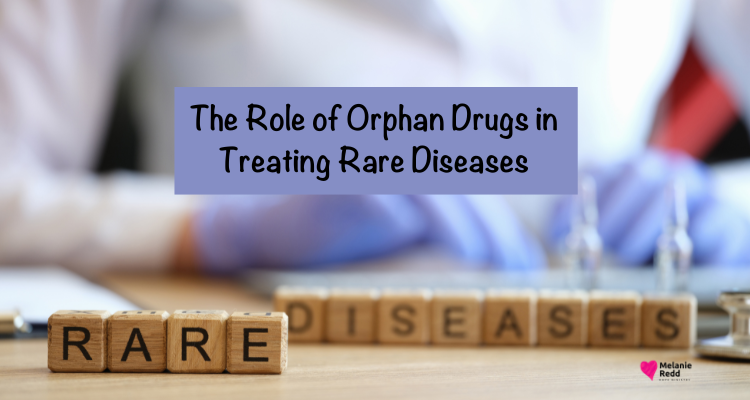The Role of Orphan Drugs in Treating Rare Diseases

The Role of Orphan Drugs in Treating Rare Diseases
New infections have been emerging for the past four decades. The NIH reports that at least three new chronic diseases have appeared annually since 1980, based on the average rate of new human pathogen species identified. We’re talking about illnesses with no known medical treatments or therapies; we’re talking about fathers, mothers, and daughters who are not sure if they’ll live long enough to get the help they need; we’re talking about lives that need help and need it now!
Thankfully, in recent decades, orphan drugs have stepped up in this regard by providing innovative treatments for these rare and serious conditions. These drugs, developed explicitly for diseases that affect a small percentage of the population, have become a source of hope for many. That said, it doesn’t matter if it’s you or a loved one who needs this treatment; this post will carefully describe the role of orphan drugs and how they can help treat rare infections.
Understanding Rare Diseases
According to the CDC, a disease is classified as “rare” when it affects fewer than 200,000 people in the United States or less than 1 in 2,000 people in Europe. These types of infections can be genetic, infectious, or the result of environmental factors. They often present unique challenges for both patients and healthcare providers. Many rare conditions are chronic, progressive, and life-threatening. They can affect your quality of life and may require specialized care throughout your lifetime.
Unfortunately, the rarity of these conditions often means that medical professionals have limited experience in diagnosing and treating them. This can lead to delayed diagnoses, misdiagnoses, and inadequate treatment options. Some examples of rare diseases include cystic fibrosis, Huntington’s disease, amyotrophic lateral sclerosis (ALS), and certain types of cancers. Each of these conditions presents its own set of challenges and requires specific treatments.
The Concept of Orphan Drugs
The idea of orphan drugs emerged in response to a significant gap in the pharmaceutical market. Before the introduction of its legislation, pharmaceutical companies had little incentive to invest in developing treatments for rare diseases. The small patient population meant that the potential return on investment was often too low to justify the high costs of
producing these drugs.
However, recognizing the pressing need for treatments for rare conditions, governments worldwide have since implemented policies to encourage the development of orphan drugs. In the United States, the Orphan Drug Act of 1983 was a climacteric piece of legislation that incentivized pharmaceutical companies to develop treatments for these infections. Comparable legislation has also been passed in other countries, such as Japan and Australia. These policies typically offer pharmaceutical companies developing these drugs a range of incentives like tax credits, grants for clinical trials, extended market exclusivity periods, fast–
tracked approval processes, etcetera.
The Development Process
The production of these medicines is similar to conventional drugs but with some unique challenges and considerations. It starts with scientists studying the underlying causes of a rare disease to identify potential therapeutic targets. Once a promising compound is identified, it undergoes preclinical testing. This involves laboratory and animal studies to assess the drug’s safety and efficacy. If preclinical testing is successful, the drug moves into clinical trials, which are conducted in humans to evaluate its
safety and effectiveness.
Throughout the development process, pharms can apply for special designation. This status provides various incentives and support from regulatory agencies. The Food and Drug Administration (FDA) grants this designation in the United States, while in Europe, it’s the European Medicines Agency (EMA).
If the treatment proves safe and effective after clinical trials, the company can apply for marketing authorization. Regulatory agencies review data from all development stages before deciding on approval. However, for rare disease treatments, this process is often fast-tracked to get therapies to patients as quickly as possible.
With all these procedures, is it still possible for a patient to access treatments that are still in development? Yes. According to Early Access Care, expanded access (also known as compassionate use or early access) programs may be available to these patients. These programs allow patients with severe or life-threatening conditions to access investigational treatments outside clinical trials when no comparable or adequate alternative treatment options are available.
Is it Worth Trying?
This decision should be entirely yours, depending on various factors, including your specific condition, the available evidence for the drug’s efficacy, potential side effects, and circumstances.
However, the potential benefits of orphan drugs can be life-changing. For many rare diseases, these drugs represent the only available treatment option. Take, for example, the case of cystic fibrosis. The introduction of targeted therapies like Kalydeco and Trikafta has dramatically improved the quality of life and life expectancy for many patients with this genetic disorder. These medications handle the underlying cause of the disease rather than just managing symptoms, representing a paradigm shift in the
treatment approach. But still, talk to your doctor about it and get their expert advice on whether it’s worth pursuing or if other treatment plans can help you.
Wrapping Up – The Role of Orphan Drugs in Treating Rare Diseases
If you’re considering this treatment plan, you should know that it’s an expensive option due to the high development costs and small patient populations. Nevertheless, many pharmaceutical companies offer patient assistance programs. And some insurance plans cover these drugs. So, explore your options, and don’t let costs prevent you from getting the treatment you need.
Were you encouraged by what you read?
Then, would you share this article with a friend, co-worker, or family member?
Or, maybe you can send it to a friend or family member?
This blog occasionally uses affiliate links and may contain affiliate links.
Additionally, Melanie Redd is a participant in the Amazon Services LLC Associates Program.
This is an affiliate advertising program designed to provide a means for sites to earn advertising fees. These are earned by advertising and linking to amazon.com.
Also, for more on my disclosure policy, click HERE.
© Melanie Redd and Hope Ministry, 2024. Unauthorized use and/or duplication of this material without express and written permission from this blog’s author and/or owner is strictly prohibited.
Further, excerpts and links may be used, provided that full and clear credit is given to Melanie Redd and Hope Ministry.
Please give appropriate and specific directions to the original content.



0 Comments